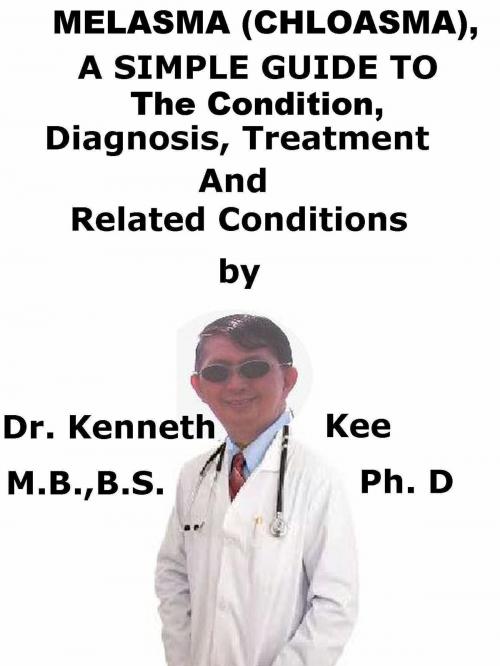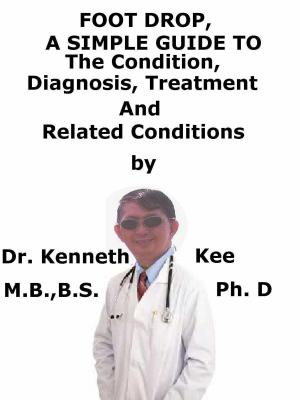Melasma, (Chloasma) A Simple Guide To The Condition, Diagnosis, Treatment And Related Conditions
Nonfiction, Health & Well Being, Medical, Specialties, Dermatology, Health, Ailments & Diseases, Skin| Author: | Kenneth Kee | ISBN: | 9781370031122 |
| Publisher: | Kenneth Kee | Publication: | November 1, 2016 |
| Imprint: | Smashwords Edition | Language: | English |
| Author: | Kenneth Kee |
| ISBN: | 9781370031122 |
| Publisher: | Kenneth Kee |
| Publication: | November 1, 2016 |
| Imprint: | Smashwords Edition |
| Language: | English |
Melasma is a medical disorder characterized by dark spots on the face.
Melasma are patches of dark skin that occur on parts of the face that are exposed to the sun.
Melasma is a skin condition that can happen at any time in life.
It is simply a type of skin discoloration found on parts of the face exposed to the sun.
Its start is normally linked to pregnancy or hormonal contraceptives usage combined with skin exposure to sunlight
The sunlight also works like a trigger.
The disorder occurs mainly in women but can also involve men.
Studies have shown that people with darker or asian skin tones have a higher possibility of forming the condition.
It has been there for a number of years and can be prevented or treated in many ways.
There are three types of hyper-melanosis.
It could be either:
1. Epidermal (brown),
2. Dermal (blue-grey),
3. A mixture of both (brown-grey).
It is much easier to prevent than treat but treatments have been proven to be very successful in completely removing all the signs of darker skin on and around the face.
1. Sun exposure is also a very strong danger factor.
2. It is frequently linked with the female hormone estrogen and progesterone therefore much more frequent in:
a. Pregnant women,
b. Women taking oral contraceptives
The only symptom of melasma is an alteration in skin color.
This color change can produce distress about the appearance.
The skin color alterations are most frequently an even brown color.
They normally occur on the cheeks, forehead, nose, or upper lip
A closer examination using a device called a Wood's lamp (which uses ultraviolet light) may assist in the diagnosis.
Treatments are:
1. Creams that contain certain substances to correct the appearance of melasma
2. Chemical peels or topical steroid creams
3. Laser treatments to eliminate the dark pigment if melasma is severe
4. Stopping hormone medicines that may be producing the problem
To avoid melasma, women should avoid exposure to the sun without sunscreen during pregnancy or use of hormonal contraceptives.
When melasma develops during pregnancy, it may spontaneously and gradually disappear after delivery
The best treatment of melasma is a triple-combination cream, a composite of hydroquinone 4%, tretinoin 0.05%, and fluocinolone acetonide 0.01% (Tri-Luma).
TABLE OF CONTENT
Introduction
Chapter 1 Melasma
Chapter 2 Causes
Chapter 3 Symptoms
Chapter 4 Diagnosis
Chapter 5 Treatment
Chapter 6 Prognosis
Chapter 7 Freckles
Chapter Hyper-pigmentation of Skin
Epilogue
Melasma is a medical disorder characterized by dark spots on the face.
Melasma are patches of dark skin that occur on parts of the face that are exposed to the sun.
Melasma is a skin condition that can happen at any time in life.
It is simply a type of skin discoloration found on parts of the face exposed to the sun.
Its start is normally linked to pregnancy or hormonal contraceptives usage combined with skin exposure to sunlight
The sunlight also works like a trigger.
The disorder occurs mainly in women but can also involve men.
Studies have shown that people with darker or asian skin tones have a higher possibility of forming the condition.
It has been there for a number of years and can be prevented or treated in many ways.
There are three types of hyper-melanosis.
It could be either:
1. Epidermal (brown),
2. Dermal (blue-grey),
3. A mixture of both (brown-grey).
It is much easier to prevent than treat but treatments have been proven to be very successful in completely removing all the signs of darker skin on and around the face.
1. Sun exposure is also a very strong danger factor.
2. It is frequently linked with the female hormone estrogen and progesterone therefore much more frequent in:
a. Pregnant women,
b. Women taking oral contraceptives
The only symptom of melasma is an alteration in skin color.
This color change can produce distress about the appearance.
The skin color alterations are most frequently an even brown color.
They normally occur on the cheeks, forehead, nose, or upper lip
A closer examination using a device called a Wood's lamp (which uses ultraviolet light) may assist in the diagnosis.
Treatments are:
1. Creams that contain certain substances to correct the appearance of melasma
2. Chemical peels or topical steroid creams
3. Laser treatments to eliminate the dark pigment if melasma is severe
4. Stopping hormone medicines that may be producing the problem
To avoid melasma, women should avoid exposure to the sun without sunscreen during pregnancy or use of hormonal contraceptives.
When melasma develops during pregnancy, it may spontaneously and gradually disappear after delivery
The best treatment of melasma is a triple-combination cream, a composite of hydroquinone 4%, tretinoin 0.05%, and fluocinolone acetonide 0.01% (Tri-Luma).
TABLE OF CONTENT
Introduction
Chapter 1 Melasma
Chapter 2 Causes
Chapter 3 Symptoms
Chapter 4 Diagnosis
Chapter 5 Treatment
Chapter 6 Prognosis
Chapter 7 Freckles
Chapter Hyper-pigmentation of Skin
Epilogue















